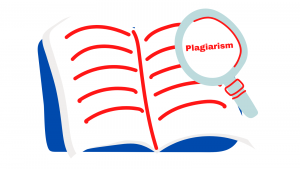5 Steps to Designing Equitable Instruction: Applying Universal Design for Learning in the English as a Foreign Language Classroom
Classrooms across the world are becoming more diverse due to global migration. This diversity is challenging teachers to adapt instruction to students at a wider range of language proficiency levels, prior educational experiences, and even differing abilities to see, hear, speak, move, and learn. Gaps in achievement are also growing because the global pandemic is leading to varying levels of access to schools. These changes make it important for all teachers to understand how to adapt their instruction to meet the needs of all students in their classroom. Universal Design for Learning (UDL) is one evidence-based framework for teaching diverse classrooms that is growing in use by teachers from early childhood to higher education. While UDL began in the United States, educators from countries such as China and Australia have adapted the principles to their unique educational context.
What is UDL?
UDL is a framework for providing equal access to education for all students. The UDL framework is built on three guiding principles of allowing multiple pathways of:
- engagement,
- representation, and
- action and expression.
Multiple pathways of engagement refers to involving students in the how and the what of the instruction. Some students engage with competition while others withdraw. Some students enjoy reading fiction or poetry and others prefer reading about current events and real-world problems. Providing choice (when possible), achievable learning goals, and a variety of teaching methods can help provide multiple means of engagement. Multiple pathways for representation refers to how content is presented. For students learning English, this may be ensuring instructions for how to do an assignment are provided in multiple modalities (e.g., written and auditorily) or by providing visuals to support understanding.
Providing multiple pathways of action and expression refers to allowing students to show what they know and can do in different ways. For example, students can show their expressive vocabulary knowledge by telling you verbally, by writing a definition for new words, or they can demonstrate their receptive vocabulary knowledge by pointing to a picture.
The three key principles provide a structured means for planning and implementing classroom teaching, from setting learning goals, to adapting teaching methods, to selection instructional materials, and to design of assessments. When teaching English, any combination of these three principles may be challenging at any point in time because there is no singular method that engages all students, represents all possible content presentations at all English language proficiency levels, and provides all possible opportunities for students to demonstrate what they have learned. This does not mean that UDL cannot or should not be applied when teaching English. Instead, we believe that this is more of a reason to do it.
These actions are recommended with the goal of producing expert learners, not lowering expectations. These principles serve as the cornerstone for fair and equitable instructional opportunities.
What UDL is not:
Sometimes people believe that UDL is the same as ‘learning styles,’ the false belief that students learn better if content is presented in a specific format (for example, the visual learner). Research does not support the idea that students learn better with a preferred learning style. Instead, UDL focuses on engagement, representation, and presentation with the intent to remove barriers to learning.
Another misconception is that UDL is only for students with disabilities. While UDL has been widely adopted by special education teachers, the key principles apply to equitable and inclusive design for all students.
How do you implement UDL?
By now, you may be thinking that the framework sounds reasonable, but the practical application may be challenging to feasibly implement consistently. By walking through a five-step process this article can show how easily you can implement UDL for your learners and aims to provide specific reflective questions to help you meet the needs of the range of students in your English language classroom.
If you are thinking that UDL may not be for you because you have computer files or drawers stuffed with lesson plans — that’s OK! UDL can be applied to those too. Just follow the same steps. When you get to Step 3, instead of creating your plan from scratch, just review your existing plans.
Step 1: Identify differences in learning needs, student goals, and student interests :
Firstly, mentally walk through and note the types and range of learners in your classroom. Some sample questions you can ask yourself include:
- What learner differences are present in my students?
- What are their motivations for learning English?
- What are their short-term language goals for this class? What are their long-term language goals?
This step is important to do, even if your learners all share the same home language, educational, and cultural experiences. Your learners are sure to differ in other ways — for example some may find certain kinds of activities more enjoyable than others, some may be experts in using technology but not be able to read and write in cursive. This is the stage where you can capture that information. If you are still getting to know your students, a pre-teaching activity could involve a student survey, where students share their desires and learning goals, self-interests, and background.
Step 2: Identify learning goals
Secondly, identify the lesson goals. This can be a new lesson that you are developing, or even an existing lesson. Some questions to reflect on include:
- What are my main lesson objectives?
- Is this a reasonable goal for all learners? If not, can I break it into smaller steps?
Identifying the language objective(s) and key goals are critical steps to teaching from a UDL perspective. Ultimately, the details of how the lesson is taught might vary to fit the range of students, but the key language objectives may remain similar for all students.
Step 3: Create your lesson plan
Thirdly, this is when you identify key components in your lesson plan with strategic questions. Some of these questions may include:
- How can the lesson engage a wide variety of learners?
- Can I provide learners with choices in the instructional materials (e.g., pick a biography to read)?
- How should the information be presented?
- What will the learners be expected to do?
- Are sensory or motor skills involved? If yes, are they critical to the language objectives? Or are they supplementary?
Remember — this type of review will look different depending on your lesson objectives and activities. Regardless of the range of your learners (for example, with or without disabilities, similar background or different backgrounds), it is important to take this step to unpack your language objectives and how they can be taught effectively.
For example, you could specify your language objective and then break down the lesson plan into the following:
To participate in this lesson, students will need to listen to the directions, watch a demo, discuss with their group, take notes, share with the class, listen to groups reporting, and discuss with their group any updates to make to their evaluation.
Keep the example general since the point is not the language objective or the specifics of the lesson plan. Rather, the focus is the process of how to see beyond the content to identify possible barriers for your students. Depending upon your learners, you may identify similar or different considerations that pose barriers to their full participation in the lessons.
Step 4: Connect possible barriers to potential solutions
Fourthly, by thinking of your language objectives and your learners, it is now time to identify possible interactions and solutions. This is another opportunity to connect with others such as co-teachers, colleagues, and especially your students, to ensure their voice is fully represented. Again, building on the strategic questions in Step 3, you can specifically reflect on the following:
- Is this lesson the only way to teach this language objective?
- How can my learners use sensory information to help them engage and interact? Alternatively, how might sensory information introduce barriers for my learners?
- How can I balance these needs to provide equitable access for my learners?
- How might my students want to learn this information?
In language teaching, we often rely on visuals and graphics to help increase engagement while simultaneously reducing language load for our learners. However, you can create balance for your learners by layering opportunities for access. For example, if you use visuals in your lesson, be sure to also (1) use language describe the visual (do not merely use language to label the visual!), (2) provide the description in multiple modalities (auditorily and printed), and (3) include hands-on materials (when appropriate) or even digital materials (for example, interactive simulations) to provide additional context and opportunities to engage your learners.
Step 5: Implementation and self-evaluation
Fifthly, when teaching your language objective to your learners, take note of how they are responding. Sample reflection questions include:
- Did everyone participate?
- Were all students engaged? If not, who seemed less engaged?
- How can I engage students with varying language skills and proficiencies? (e.g., selecting response or writing instead of speaking)
- Did everyone have an opportunity to learn?
- Did everyone have an opportunity to demonstrate mastery?
- What can be done to improve the lesson next time?
Again, thinking of your learners — record the learner profiles too, when reflecting on the lesson implementation. This note will help to provide important context for iterative improvement as you revisit and build upon the language objectives over time, to facilitate their learning.
Beyond awareness to practical application
Language teachers have an unparalleled opportunity to equip their learners with the language skills necessary to communicate across numerous contexts. It is imperative to provide all learners with equal opportunities to learn. Through this five-step application of UDL, language teachers can design lessons from inception or adapt existing lessons to ensure that their language instruction is accessible, engaging, and effective for all learners.
Danielle Guzman-Orth, Ph.D., is a research scientist at ETS. She is a long-time champion of equitable, inclusive, and accessible educational experiences for English learners and their teachers, including English learner students and teachers with disabilities. Her background in instructional interventions and assessment for English learners with disabilities drives her research and co-design practices with teachers and students. Through her research, she blends evidence-based interdisciplinary techniques to achieve meaningful outcomes for all learners.
 Cara Cahalan Laitusis, Ph.D., is a research scientist at ETS. She is a nationally certified school psychologist and member of the American Psychological Association’s Coalition for Psychology in the Schools and Education. She works to integrate psychological theory and accessibility standards into measurement and assessments and her current passions include research to identify what digital design elements improve motivation and academic engagement for all learners (a principle of UDL). You can connect with her on Twitter at @CaraLaitusis
Cara Cahalan Laitusis, Ph.D., is a research scientist at ETS. She is a nationally certified school psychologist and member of the American Psychological Association’s Coalition for Psychology in the Schools and Education. She works to integrate psychological theory and accessibility standards into measurement and assessments and her current passions include research to identify what digital design elements improve motivation and academic engagement for all learners (a principle of UDL). You can connect with her on Twitter at @CaraLaitusis





